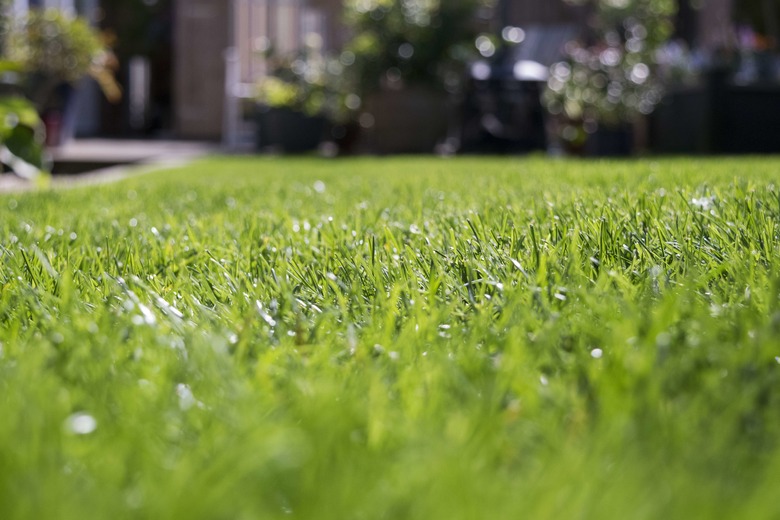3 Reasons Your Grass Is Yellow (And How To Get It Green Again)
The ideal lawn looks like a lush, verdant carpet. To achieve this, you water and fertilize your lawn religiously, mow to a specific height on a regular schedule, aerate and overseed in the spring and keep a sharp eye out for any signs of trouble. So, why do you see a yellow-tinged lawn instead of that brilliant green you're striving for? And more important, how do you turn a yellow lawn green?
One possible answer may surprise you: too much lawn care. Your yellowing or browning lawn could be the result of overwatering and overfertilizing. But if you see patches of yellow, dying grass dotted throughout the yard, another problem may exist. Accurately identifying the cause is the first step in turning your yellow lawn green again.
1. Incorrect Watering
1. Incorrect Watering
A dry, brittle, brown lawn definitely needs water to survive and turn green. But overwatering can also lead to yellowing because it can cause a nutrient imbalance or inhibit the availability of oxygen in the soil.
Roots require oxygen gas in order to function. Just as people can't breathe under water, roots can't retrieve oxygen from water. Grass roots essentially drown when they're constantly wet from overwatering. When the roots can no longer take in oxygen or important nutrients from the soil — like nitrogen or iron — the blades begin to turn yellow.
2. Nutrient Imbalances
2. Nutrient Imbalances
Nutrient imbalances can occur in lawns even when you don't overwater. According to the University of Maryland Extension, lawns typically require an annual application of nitrogen fertilizer. Otherwise, yellow streaks can appear in the blades. Iron deficiency can also cause yellow streaks. Interestingly, animal urine also causes yellow spots due to its high nitrogen content.
For best results, use a soil test before purchasing a fertilizer so you can apply the correct type and in the proper amount. Too much fertilizer is just as problematic as no fertilizer. Fertilizer burn can occur when grass gets overloaded with fertilizer, which is why it's important to apply fertilizer at the recommendation of a soil test or at the manufacturer's recommended rate in the absence of a soil test. Avoid overlapping your applications.
3. Diseases
3. Diseases
Diseases affecting grass typically appear as yellow patches in the lawn. Overwatering and overfertilizing add to the problem of diseased grass because they weaken the plant's ability to fend off disease. Many fungi in particular thrive in soil that's constantly moist.
The University of Georgia Extension notes that brown patch, dollar spot, pythium, helminthosporium leaf spot, fading out, take-all root rot and rust are all examples of turfgrass diseases that tend to appear when there's a nutrient imbalance or water stress.
